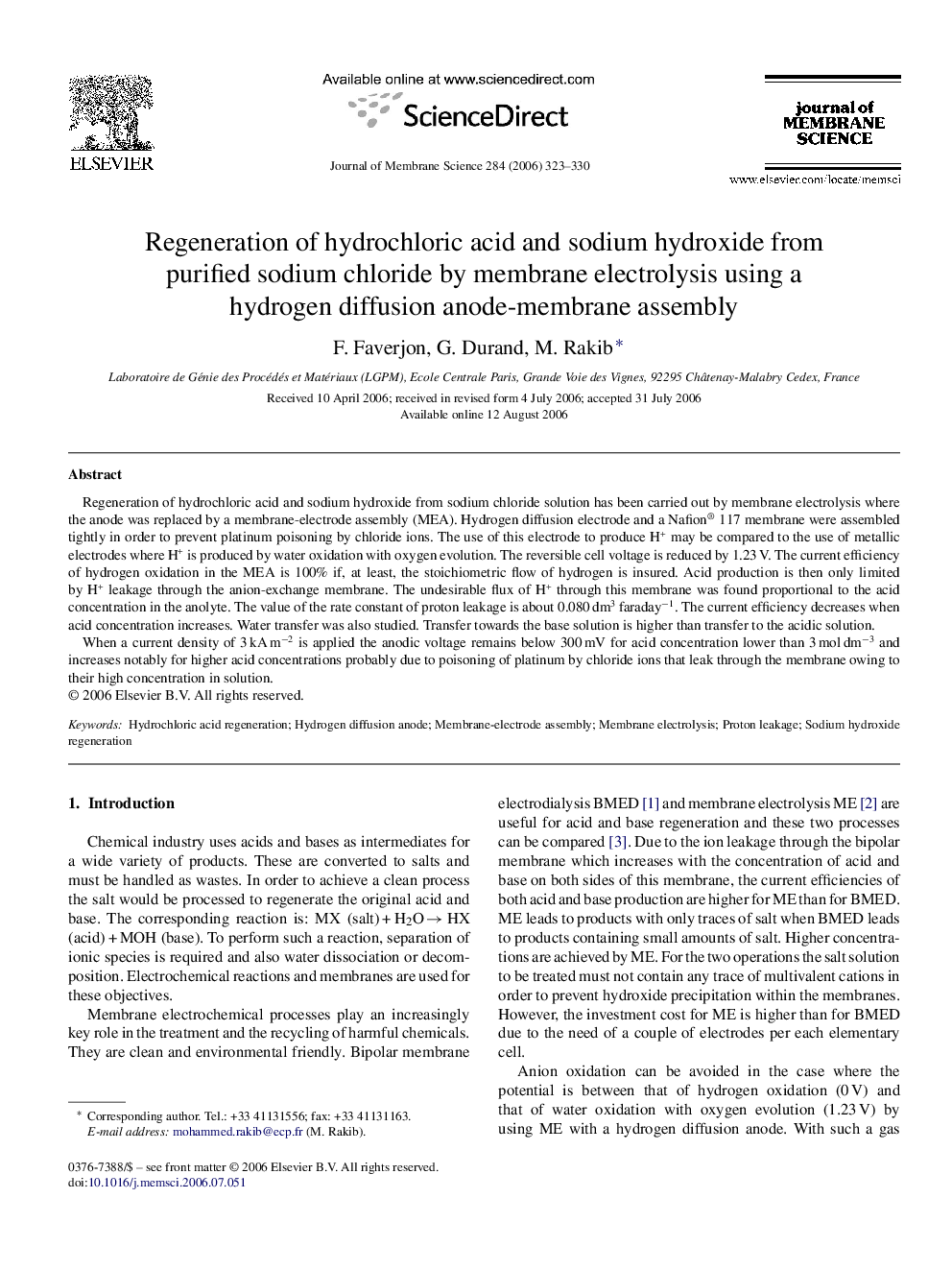| Article ID | Journal | Published Year | Pages | File Type |
|---|---|---|---|---|
| 639055 | Journal of Membrane Science | 2006 | 8 Pages |
Regeneration of hydrochloric acid and sodium hydroxide from sodium chloride solution has been carried out by membrane electrolysis where the anode was replaced by a membrane-electrode assembly (MEA). Hydrogen diffusion electrode and a Nafion® 117 membrane were assembled tightly in order to prevent platinum poisoning by chloride ions. The use of this electrode to produce H+ may be compared to the use of metallic electrodes where H+ is produced by water oxidation with oxygen evolution. The reversible cell voltage is reduced by 1.23 V. The current efficiency of hydrogen oxidation in the MEA is 100% if, at least, the stoichiometric flow of hydrogen is insured. Acid production is then only limited by H+ leakage through the anion-exchange membrane. The undesirable flux of H+ through this membrane was found proportional to the acid concentration in the anolyte. The value of the rate constant of proton leakage is about 0.080 dm3 faraday−1. The current efficiency decreases when acid concentration increases. Water transfer was also studied. Transfer towards the base solution is higher than transfer to the acidic solution.When a current density of 3 kA m−2 is applied the anodic voltage remains below 300 mV for acid concentration lower than 3 mol dm−3 and increases notably for higher acid concentrations probably due to poisoning of platinum by chloride ions that leak through the membrane owing to their high concentration in solution.
